Recent Articles
Popular Makes
Body Types
2020 Ford Edge Road Test and Review
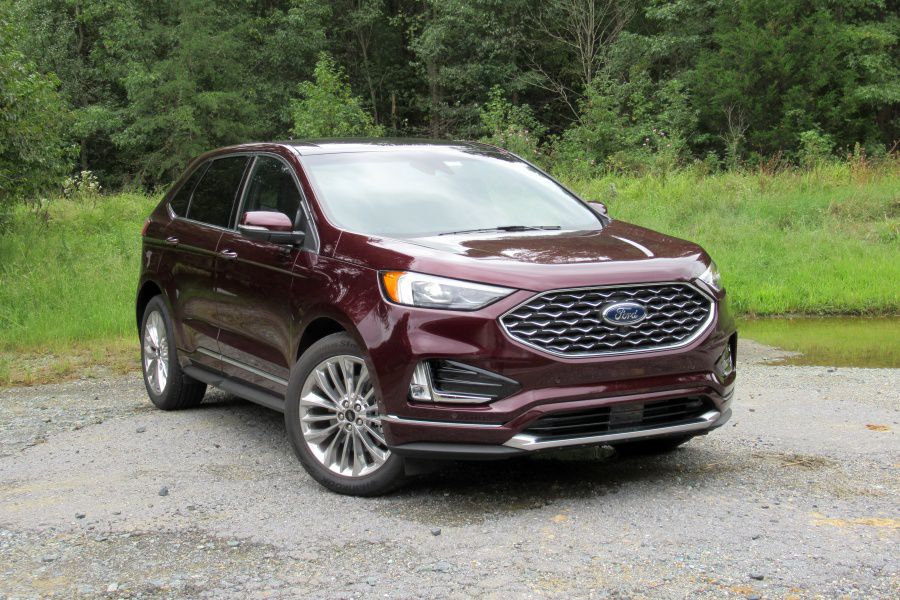
2020 Ford Edge Titanium ・ Photo by Brady Holt
Compact crossover SUVs are incredibly sensible vehicles. The best ones are spacious, comfortable, and fuel-efficient, yet also affordable to buy. That’s why so many brands’ best-sellers are their compact crossovers.
But sometimes, you want a more luxurious experience than a compact crossover can offer. Stepping up to a mid-size crossover doesn’t always get you a roomier interior than a space-efficient compact, but it tends to buy more comfortable seats, a quieter ride, and more powerful engines. Most models also add a third-row seat, too, which is handy for big families. But if you want the high-end refinement of a mid-size crossover without the extra bulk of a three-row model, one of the most popular options is the 2020 Ford Edge. This is a well-rounded vehicle that’s more elegant than the less expensive, better-selling compact Ford Escape. But at a base price of $31,100, is it worth it? Let’s go over the details.
Handsome Exterior
The Ford Edge is a conservatively attractive crossover that stretches its gentle curves over a generously sized footprint. It looks substantial without being imposing, and upscale without being garish. The current-generation Edge dates back to 2015, but the 2019 model year brought a comprehensive restyle that replaced Ford’s then-typical three-bar grille with a more traditional mesh design.
The Edge is neither an aggressively sporty design like the competing Chevrolet Blazer or Volkswagen Atlas Cross Sport, nor a utilitarian box like the Honda Passport. And for better or for worse, nothing about the Edge’s style screams “SUV capability.” And that’s good, because such design cues would be a false promise. The Edge is a taller, roomier car, not a true SUV like a Jeep Grand Cherokee or Toyota 4Runner. That means this Ford has advantages in on-road driving dynamics and interior space efficiency, but it’s not a car built for on-road or off-road excitement. You can dress up the exterior a bit with blacked-out trim on the ST Line and ST models, the latter of which also backs up the look with a more powerful engine and sportier suspension tuning.
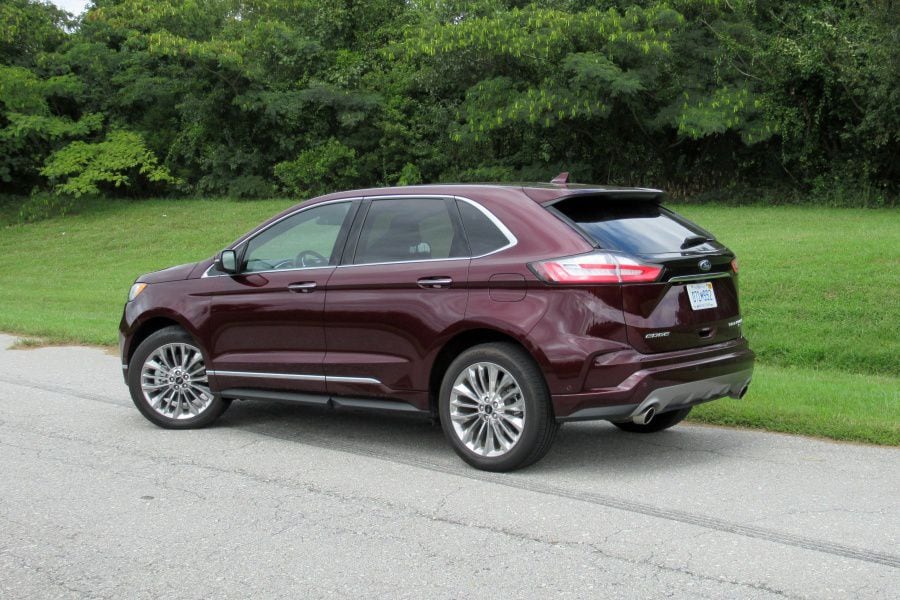
Photo by Brady Holt
Functional Interior
The Ford Edge’s interior hasn’t changed as much since 2015, and it shows its age there — especially for a vehicle that’s positioned as a somewhat upscale choice. You can load it up with high-end features and rich leather (with an appealingly unconventional maroon upholstery option on our test car), but the dashboard is fairly drab.
All Edge models come with an 8-inch infotainment touchscreen, which sits in the middle of the dashboard. It works well but doesn’t dazzle visually, and it’s smaller than a growing number of options in this class. Apple CarPlay and Android Auto smartphone integration come standard. The rest of the center stack is drab gray plastic with a few buttons and knobs scattered here and there. They’re not pretty and not even especially easy to use. However, there’s plenty of cabin storage, aided by the space-saving rotary gear selector.
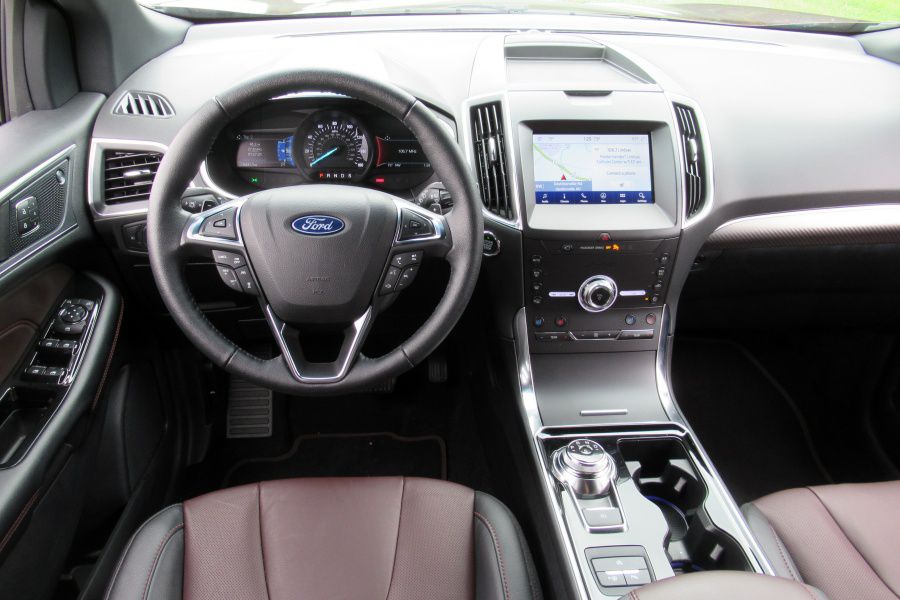
Photo by Brady Holt
Comfortable Seats
The Edge has well-shaped front seats with plenty of space. If you feel too close to the front passenger in a compact crossover, the Edge’s extra width provides some breathing space. And its seats are cushier than the norm among smaller models. We started to feel a little sore on a longer drive, though, and outward visibility could be better.
In the back, the Edge has only equivalent legroom to a good compact crossover, but there’s a key difference. The Edge’s seat cushion is bigger, higher, and better-padded than you’ll find in the Ford Escape and its fellow compacts. It’s also wider, making it much easier to fit three adults across. Either leather or leatherette upholstery with heated front seats is standard on all but the base model, and the best-equipped Titanium and ST also include ventilated front seats and heated rear seats.
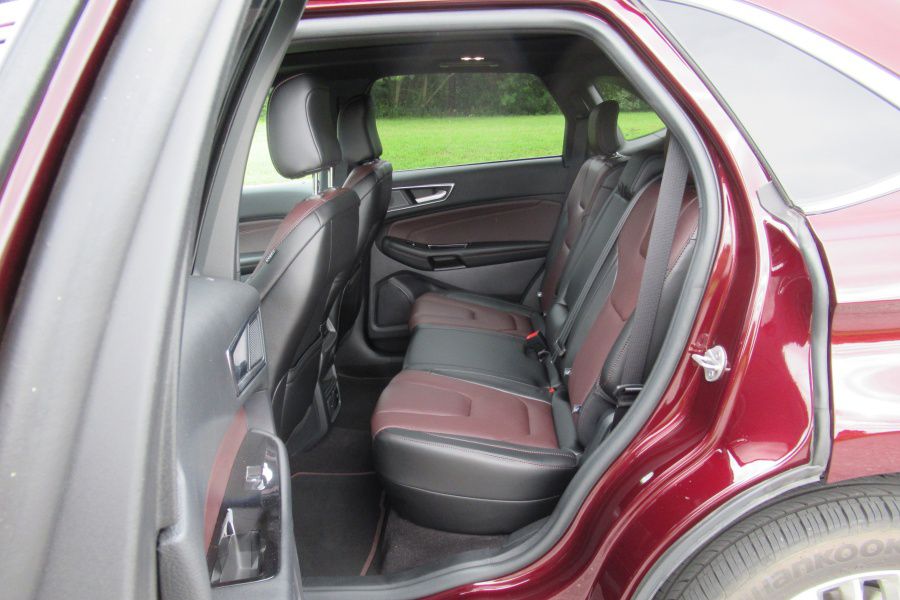
Photo by Brady Holt
Decent Cargo Room
The tradeoff to the Edge’s comfort-focused rear seat is its cargo space. Many compact crossovers prioritize the usefulness of a flat-folding rear seat, which sometimes forces the cushion to be lower, thinner, or shaped differently. Since the Edge is more about luxury than maximum volume, Ford lets its rear seat rest at an incline when you fold it down. Choose between your passenger and cargo priorities accordingly.
By the numbers, the Edge has 39.2 cubic feet of cargo space behind the rear seat and 73.4 cubic feet with the rear seat folded. That’s more than an Escape, but about the same as Honda CR-V. Still, in the style-focused world of mid-size five-passenger crossovers, the Edge’s numbers are above-average. It comfortably trumps the Chevrolet Blazer, Nissan Murano, and Jeep Grand Cherokee, but it can’t come close to the class-leading Honda Passport.
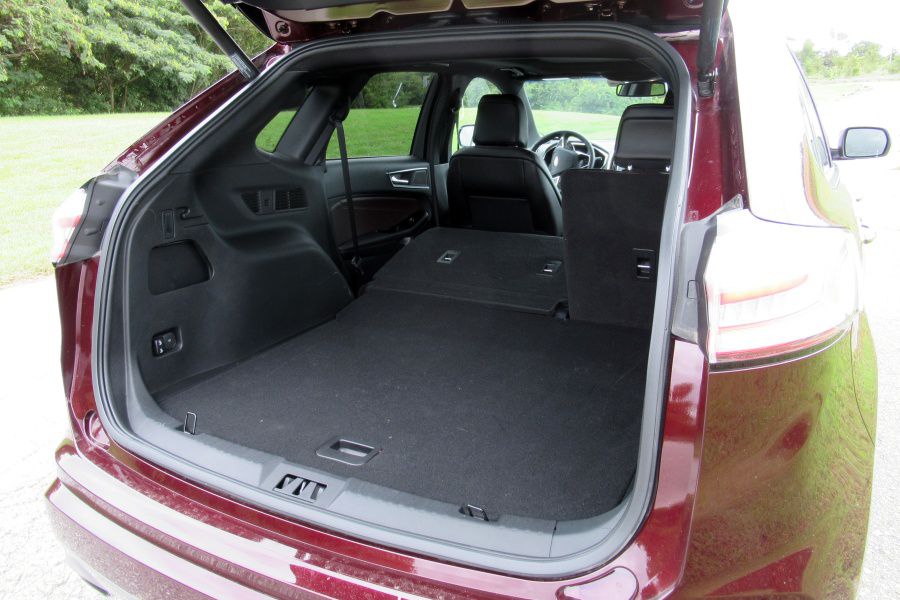
Photo by Brady Holt
Peppy and Fuel-Efficient
A particular strong point to the 2020 Ford Edge is the 2.0-liter turbocharged four-cylinder that’s standard on all but the ST model. Making 250 horsepower and 275 lb-ft of torque, this engine is smooth, quiet, and lively; traditionalists might wish for six cylinders, but this little engine is all that most folks will need. It’s also a fuel-sipper, managing EPA ratings of 21 mpg in the city, 29 mpg on the highway, and 24 mpg with front-wheel drive and about 1 mpg less with all-wheel drive. Our AWD test vehicle averaged an excellent 28 mpg in a week of mixed driving.
Buyers of the ST model get a 2.7-liter turbocharged V6 that makes a mighty 335 horsepower and 380 lb-ft of torque. It manages a still-respectable 19 mpg in the city, 26 mpg on the highway, and 21 mpg overall, and comes only with all-wheel drive. That’s just 2 mpg less than an AWD 2.0-liter. Both engines can tow up to 3,500 lbs, which is better than most compact crossovers but not outstanding for a mid-size.
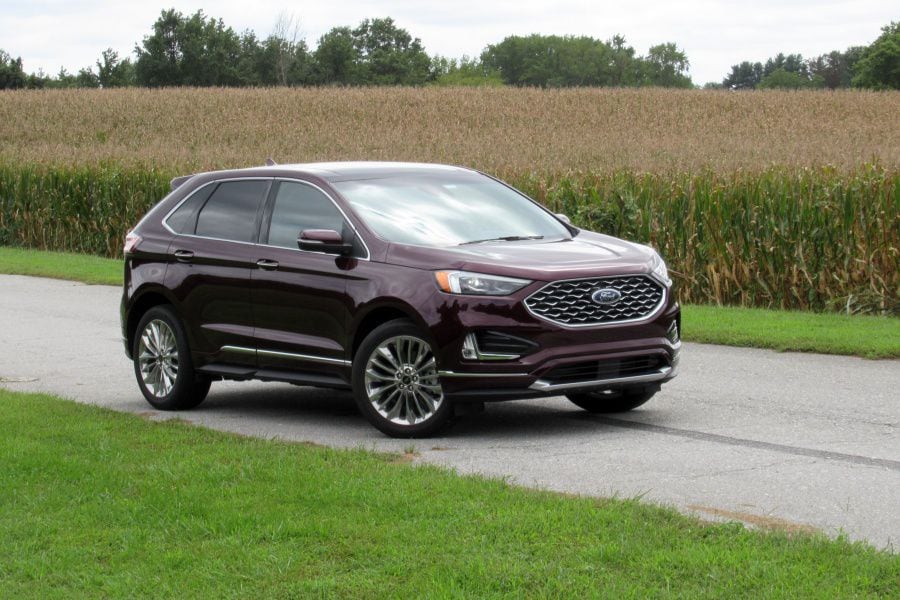
Photo by Brady Holt
Big-Car Ride and Handling
If you like the feel of an agile, light, small car, you won’t love the Ford Edge. It feels bigger than it is, for better and for worse. You coast gently and quietly down the road, feeling safe and unperturbed. The suspension isn’t perfect, so you don’t get the extra-cushy ride you might expect from this vibe, but we’d still call the Edge a comfortable vehicle. And you feel its extra 600 pounds over the less-substantial Escape.
Don’t let this description imply that the Edge handles clumsily. It lacks the agility of a Chevrolet Blazer or Honda Passport, but it has decent poise by the standards of a big vehicle, and its steering feels natural. You wouldn’t pick it for performance driving, but it behaves itself well on public streets at responsible speeds. Plus, because it measures 189 inches long — 10 inches less than a Ford Explorer — it’s easier to parallel-park and takes up less of your driveway or garage. Its turning radius is wide at 19.6 feet, though.
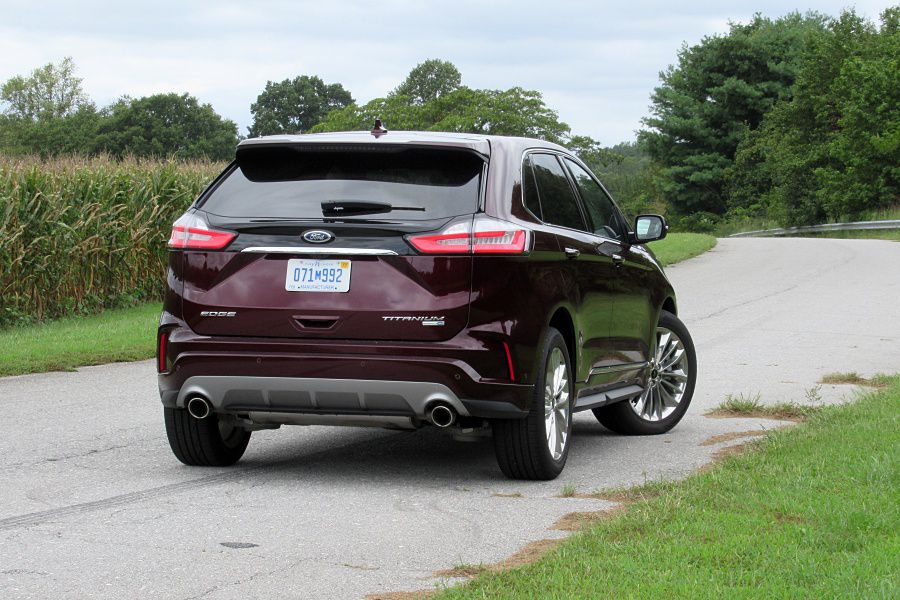
Photo by Brady Holt
Lots of Standard Features
The 2020 Edge is well-equipped even in the base $31,100 SE model, with luxuries including a 10-way power driver’s seat and push-button starting, plus a suite of advanced safety features: a forward-collision warning with automatic emergency braking, a lane-departure warning with lane-keeping steering assistance, blind-spot monitoring with a rear cross-traffic alert, and rear parking sensors.
Additions on the SEL, $34,355, include leatherette upholstery, heated front seats, and a leather-wrapped steering wheel. It also opens the door to valuable options such as adaptive cruise control and a hands-free power liftgate. The Titanium, like our test car, starts at $38,100 and adds leather upholstery, a 12-speaker Bang & Olufsen sound system, a power-adjustable steering column, memory settings for the driver, and that power liftgate. However, while adaptive cruise control and enhanced semiautonomous steering systems cost just $795 on the SEL, they require a $4,150 package on the Titanium that also includes ventilated front seats, heated rear seats, a panoramic sunroof, and a self-parking system. The ST starts at $43,265 with mostly the same features at the Titanium but a larger engine. All-wheel drive costs $1,995 extra on all models but the ST, where it’s standard.
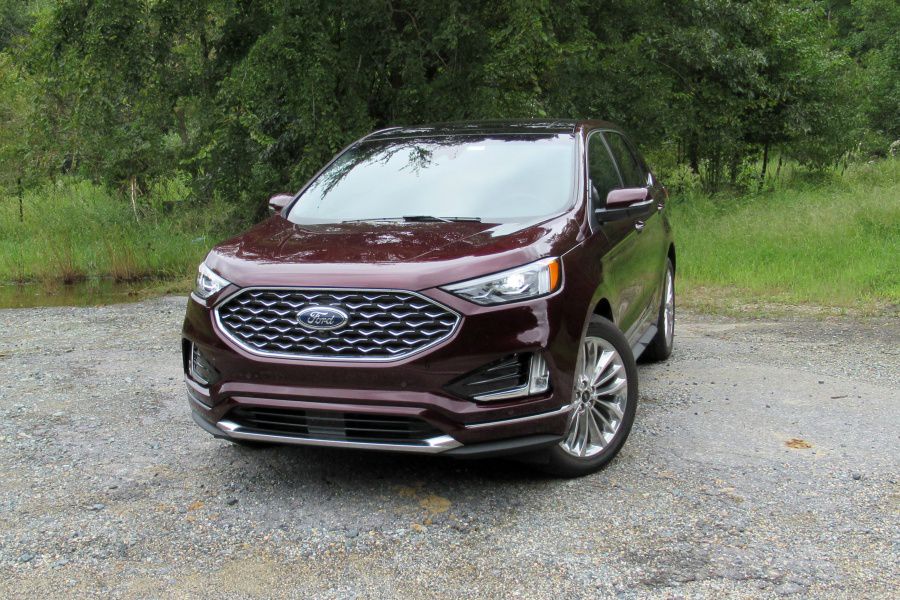
Photo by Brady Holt
A Growing Field
Until recently, the Edge was one of just a few five-passenger mid-size SUVs. But three new models recently joined the class: the Volkswagen Atlas Cross Sport, Chevrolet Blazer, and Honda Passport.
The Honda is extra-spacious, smooth-riding, and even a little sporty, but this boxy vehicle is more about comfort and practicality than style or luxury. The radical-looking Chevy is the sports car of the segment, but it has a relatively tight interior, an underpowered base engine, and fast-rising prices. The VW combines wild looks with a spacious cabin, but gets mediocre fuel economy. Other class stalwarts include the posh, off-road-ready, but pricey Jeep Grand Cherokee; the elegant but relatively cramped, somewhat awkward-driving Nissan Murano; the sensible, affordable, and somewhat characterless Hyundai Santa Fe; and the excellently priced, extra-efficient, not-stylish Subaru Outback. And if you like the Edge, you could consider spending a few extra thousand for the excellent Lincoln Nautilus, which is a mechanical cousin to the Edge with more elegant styling, fancier interior materials, and more available features.

Photo by Brady Holt
Still Competitive
Depending on which options and how much interior space you want, the 2020 Ford Edge can be a lot of crossover for your money. It has a big-car feel without big-car bulk, big-car fuel consumption, or especially high prices. And its cushy seats are perfect if you want to carry five people but never need to fit a sixth or seventh.
Shoppers who want some specific features might find themselves forced to pay up for others they don’t want. And if you measure value in terms of spaciousness for the money, you can spend similar cash for a larger three-row crossover, or get similar interior roominess for less money in some compacts. But for quiet five-seat comfort, the Edge remains a competitive choice among its growing list of peers.
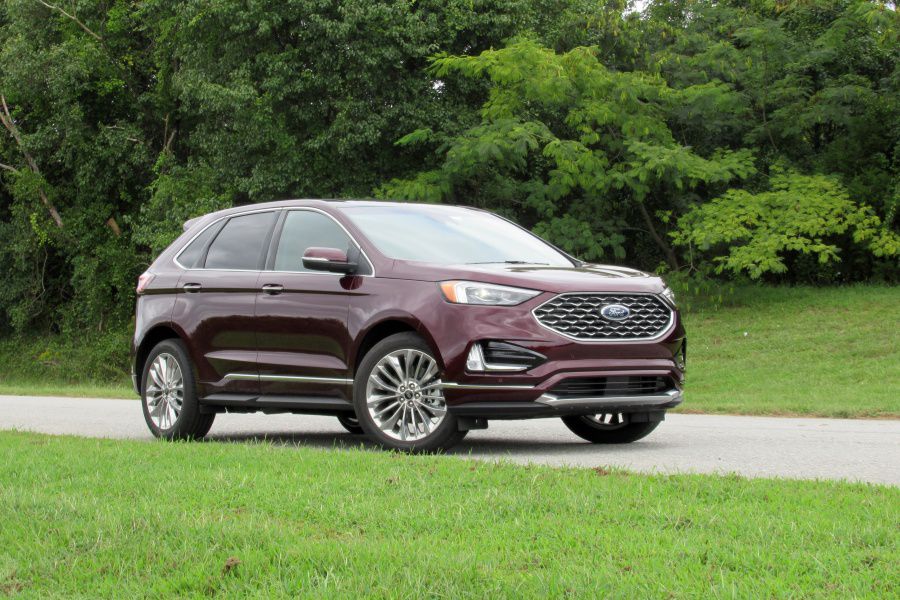
Photo by Brady Holt